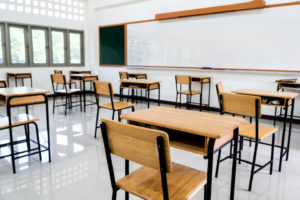Wisconsin students missing class at alarming rates over past decade, report says
(The Center Square) – Many children in Wisconsin schools have not returned to class since the COVID outbreak.
A new report from the Wisconsin Institute for Law and Liberty looks at the…

(The Center Square) – Many children in Wisconsin schools have not returned to class since the COVID outbreak.
A new report from the Wisconsin Institute for Law and Liberty looks at the spike in chronic absenteeism, particularly since the start of the 2020 school year.
“The first step in the education of a student is them being present to absorb the material. But when a student is regularly not in school, this process breaks down,” Will Flanderrs wrote in the report. “Getting kids into school on a daily basis is a responsibility shared by school districts and parents. While there is no one change that can magically reverse the downward trend in attendance, it is vital that this issue be at the forefront for policymakers concerned about the education of the next generation.”
The report shows truancy rates in Wisconsin public schools have more than doubled since 2012.
“About 10% of students were chronically absent in 2012 compared to more than 20% today,” the report notes.
The report also shows some of Wisconsin’s worst-performing schools have the highest absentee numbers.
“Beloit, Racine, and Milwaukee are among the districts with the lowest Forward Exam proficiency, but highest absenteeism,” the report said. “Many of the districts with the lowest rates of absenteeism are elementary-only districts – suggestive of the fact that students tend to skip school significantly more as they age and parental oversight declines. Many of Wisconsin’s largest-enrollment school districts are found at the top.”
Racine Schools have the highest absentee rate, followed by Beloit Schools, Milwaukee Public Schools, Ashland Schools and Green Bay Area Public Schools.
Wauzeka-Steuben Schools have the lowest absentee rate, followed by Stone Bank Schools, the Paris J1 district, Swallow Schools and Kohler Schools.
WILL’s report also looks at the effort to fight chronic absenteeism, which is largely non-existent in many communities.
“In most of Wisconsin, actual charges under the state’s truancy laws are quite rare. The most common charge is for contributing to the truancy of a minor,” the report notes. “This charge has been levied 359 times between 2018 and 2022, with only 109 eventual convictions. A very small number of counties contribute to the overall numbers.”
WILL’s report shows Winnebago and Marathon counties account for more than 70 of those 109 convictions. Prosecutors in Milwaukee, Green Bay, and Beloit did not record a single truancy conviction between 2018 and 2022.
WILL’s suggested solution is not more prosecutions but rather more education for parents.
“There is conventional wisdom, especially among low-income parents, that attendance in early grades is less critical than, say, high school attendance. But the reality is largely the opposite: students who fall behind early in subjects like reading are often never able to catch back up,” the report states. “Another key factor in reducing absenteeism is making sure that students feel safe in school. A number of studies over the years have found that a negative school environment, or even news of recent school violence, lead to higher rates of absenteeism. WILL has done extensive work over the years on the ways that politically correct discipline policies have harmed school safety. Moving away from softer discipline policies and returning resource officers to schools where needed could improve not only safety, but also attendance.”



